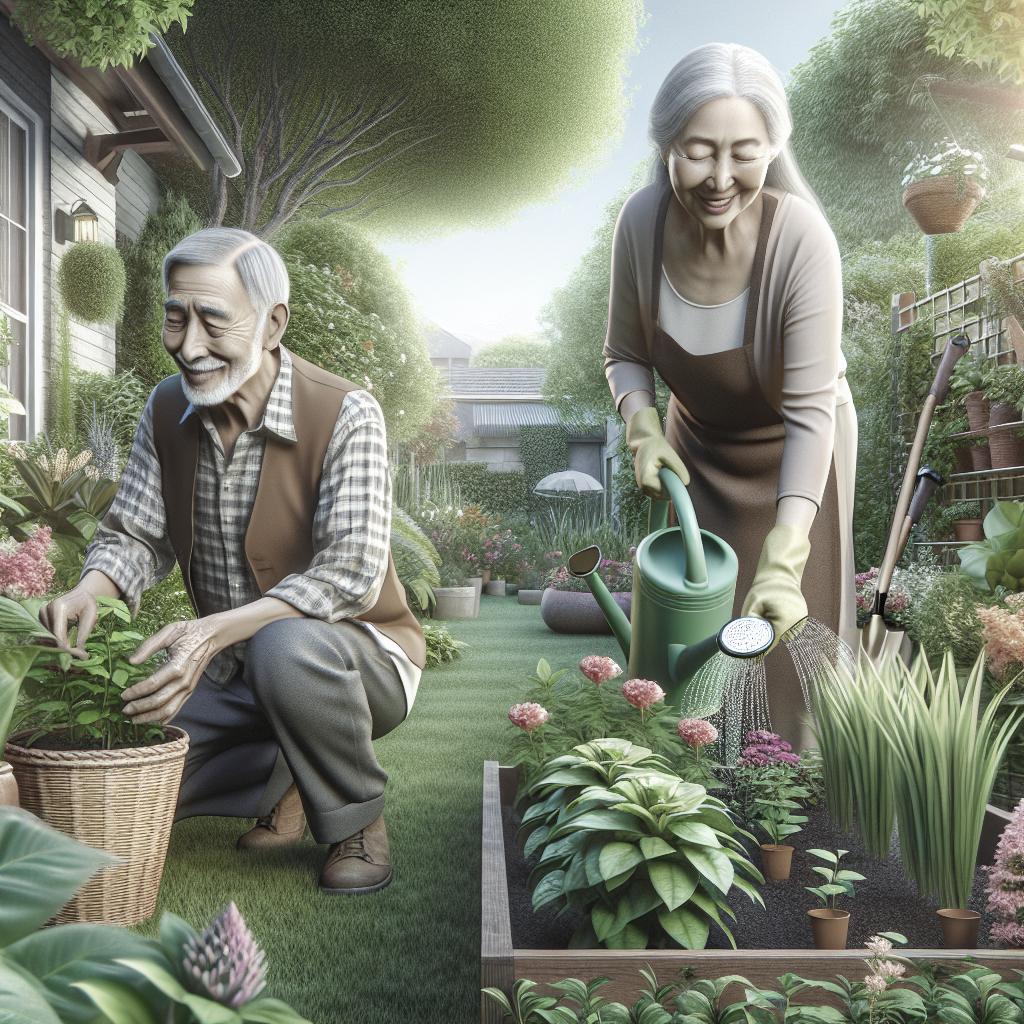Gardening Activities for Retirees
Gardening is a fulfilling and therapeutic activity, especially for retirees seeking to stay active and engaged. Whether you are gentle gardening in your backyard or participating in communal gardens at a nursing home, there are activities and tools available tailored to make gardening accessible and enjoyable for seniors. This blog provides gardening tips, explains how elderly individuals can enjoy gardening activities safely, and elaborates on gardening opportunities for nursing home residents. Additionally, learn about choosing and using a walking cane, a valuable tool that can enhance mobility and safety. Embrace these gardening practices to enrich your post-retirement life, enhance your mental well-being, and stay connected with the community.
Gardening Tips, Videos, Info and More Delivered Right to Your Inbox!
Keeping up with gardening tips and trends can be as easy as signing up for dedicated newsletters that deliver insightful articles, how-to videos, and the latest gardening news right to your inbox. These resources can be a huge help, offering step-by-step guides on creating the perfect garden layout or the latest eco-friendly gardening trends. Many online gardening communities also offer forums where retirees can share tips, photos, and experiences, providing a sense of camaraderie and shared purpose.
Subscription services often offer a wealth of information tailored to different gardening interests, whether you’re passionate about floral arrangements or eager to start an organic vegetable patch. Engaging with these platforms can motivate retirees to try new things and apply innovative ideas to their gardens. Plus, video tutorials are a fantastic way to learn new gardening techniques without stepping out of your home, making it an ideal option for retirees.
Gardening Activities for the Elderly
For the elderly, gardening can be customized to match their physical capabilities and personal interests. Raised garden beds, hanging planters, and vertical gardens can help reduce the physical strain associated with traditional gardening. These adaptations make it easy for seniors to engage in gardening without having to bend or kneel excessively. Additionally, incorporating lightweight tools with ergonomic handles can enhance comfort and efficiency.
Container gardening is another excellent option as it allows for versatility and ease of movement. Seniors can choose from small, manageable plants such as herbs, tomatoes, or succulents to start with. Apart from being a practical way to garden, it also allows retirees to personalize their space with vibrant flowers and plants, enhancing their home’s aesthetics and instilling a sense of accomplishment.
Gardening for Nursing Home Residents
Gardening in nursing homes introduces wonderful opportunities for socialization, improvement of mental health, and the creation of a therapeutic environment for the residents. Communal gardens not only brighten up living spaces but also encourage team-building and communication among residents, which ultimately strengthens community bonds. Engaging in gardening activities can significantly enhance mood, reduce anxiety, and provide a sense of routine and purpose.
Garden therapy programs can be introduced in nursing homes to embed gardening into daily or weekly activities. These programs may include simple gardening tasks such as planting, watering, and weeding, ensuring that residents have a hand in maintaining garden beds. Gardening not only connects residents with nature but can also promote physical activity, which is crucial for maintaining health and vitality in later years.
Ultimate Guide to Choosing and Using a Walking Cane
A walking cane can be an indispensable tool for retirees who want to remain mobile while engaging in gardening activities. Choosing the right cane involves considering factors such as the height of the cane, handle type, and the material it’s made from. Adjustable canes are often recommended since they offer flexibility and ease of use, accommodating changes in posture or terrain.
Utilizing a walking cane properly not only prevents falls but also alleviates pressure on joints, which is particularly beneficial when tending to a garden. It’s crucial to ensure that the rubber tip of the cane provides adequate grip, especially when walking over damp or uneven ground. With the right cane, retirees can safely navigate their garden paths with confidence and security, keeping their love for gardening alive.
Future Prospects
| Section | Content Summary |
|---|---|
| Gardening Tips, Videos, Info and More Delivered Right to Your Inbox! | Explore newsletters and online communities that offer gardening tips, videos, and forums for retirees to engage and learn. |
| Gardening Activities for the Elderly | Adopt ergonomic gardening practices such as raised beds and container gardening to ease physical strain for seniors. |
| Gardening for Nursing Home Residents | Implement communal gardening projects and therapy programs to enhance mood, reduce anxiety, and foster community in nursing homes. |
| Ultimate Guide to Choosing and Using a Walking Cane | Learn how to select the right walking cane and use it effectively to maintain mobility and safely enjoy gardening activities. |


